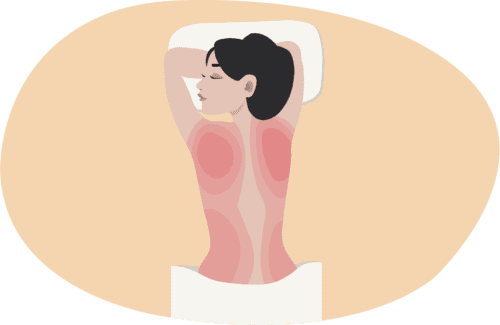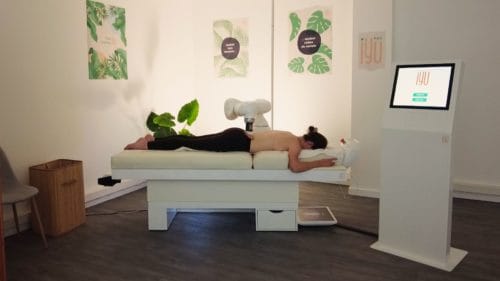Do you know what musculoskeletal disorders (MSDs) are? These are disorders or even pains that affect muscles, tendons, nerves, and joints. MSDs are primarily caused by repetitive or prolonged movements and postures, as well as degraded mental well-being. The occurrence of MSDs is increasingly common in the workplace, with negative consequences for employees’ physical and mental well-being. This also impacts company performance and productivity, resulting in high costs for both individuals and the collective. Therefore, preventing musculoskeletal disorders is a major challenge for employers.
Musculoskeletal Disorders: Numerous Consequences
MSDs have various negative consequences for a company, including:
- Significant financial costs: related to absenteeism, rehabilitation, staff replacement, and the resulting training.
- Workers affected by MSDs may also have reduced work capacity and be less productive due to their discomfort, leading to a decrease in the company’s overall productivity.
- Employees may struggle to perform their tasks correctly, resulting in a decline in product or service quality, which can lead to reduced customer satisfaction.
- A drop in employee morale due to pain and frustration from MSDs, affecting work quality and team engagement.
Additionally, if a company fails to take necessary measures to prevent MSDs, it may be exposed to legal actions from affected workers. In fact, Article L. 4121-1 of the French Labor Code reminds us that it is the employer’s responsibility to safeguard employees’ physical and mental health. Beyond legal risks, companies that neglect worker health and safety may face reputational damage, harming their brand image and ability to attract and retain talent.
Musculoskeletal Disorders: Risk Factors
MSDs can be caused by several factors, including:
- Inappropriate and prolonged work postures: Maintaining a static position for long periods can lead to excessive muscle strain and poor blood circulation, causing pain.
- Repetitive physical movements: Activities involving repetitive motions can put excessive pressure on muscles, tendons, and nerves, leading to pain or injury.
- Excessive physical effort: Intense and frequent efforts can cause muscle strain and injuries.
- Exposure to regular vibrations, such as those produced by machines, can damage muscle tissue and cause pain.
- Working conditions: Certain types of work, such as assembly line tasks or assembly jobs, significantly increase the risk of MSDs due to the repetitive nature of the tasks and the awkward positions involved.
- Inadequate management: High workloads or tense work environments greatly increase psychosocial risks, a major source of MSDs.
- Lack of ergonomic adjustments: Poorly arranged work environments can cause pain and injuries.
- Stress: Stress can lead to muscle tension and mental fatigue, directly correlating with the increased risk of MSDs.
- Lack of exercise and sedentary behavior: Reduced physical activity can lead to pain and injuries.
It is crucial that employers consider all these risk factors and implement multi-dimensional solutions aimed at effectively preventing MSDs among their employees.
Massage: A Solution to Ease Tension
What solutions can employers adopt to combat musculoskeletal disorders? Companies can first raise awareness among all staff about good practices for preventing MSDs. They can also implement complementary strategies to address these disorders. These might include reflecting on work organization, revising management styles, or installing ergonomically adapted workstations. Beyond that, some companies aim to intervene on a physical level. They can offer daily warm-up sessions in workshops for physically demanding jobs, provide exoskeletons to lighten loads, teach proper posture practices, or organize group relaxation or sports classes.
One increasingly common corporate strategy is massage in the workplace. It plays an important role in promoting workplace well-being and relieving everyday physical and mental tension. Massage can be useful by:
- Improving blood circulation;
- Relaxing tense muscles;
- Enhancing flexibility;
- Relieving stress.

Massage as a Preventive Solution for MSDs
Some employers offer massages to their staff to improve well-being and alleviate tension. They recognize that by addressing individual needs, they can improve team performance. These initiatives are universal, benefitting both employees in physically demanding roles and administrative staff who sit for long periods. The main limitation of this approach is that interventions are often brief and temporary, typically coinciding with specific events, like Workplace Quality of Life Week. Some companies go further by having a professional masseur visit two to three days per month. While this offers more regular support, it remains insufficient for large sites with hundreds of employees, limiting access to the service when tension arises.
iYU® Pro: A Recurring Massage Solution for Regular Care
An innovative solution allows employees to relieve daily physical and mental tension. Robotic massage enables regular, autonomous use. iYU® Pro is a cutting-edge multisensory device that combines a massage table with a robotic arm, replicating the gestures of a professional masseur. This innovation uses sensors to adjust to each individual’s body and customizes the massage accordingly. It’s also a multisensory experience, offering relaxation during breaks. You can choose the massage protocol, the sound environment, and the table’s temperature, creating a truly personalized experience.

It’s important to take a multi-faceted approach to preventing MSDs.
While robotic massage offers many benefits (endurance, consistency, precision, and availability), it is designed to complement, not replace, human care, whether it’s traditional massage or self-massage. It’s essential to note that massage, whether manual or robotic, cannot be considered the sole solution to workplace discomfort. This physical strategy should be used in combination with other prevention strategies for MSDs, such as:
- Improving workstation ergonomics;
- Practicing regular stretching and strengthening exercises;
- Taking regular breaks to prevent muscle fatigue;
- Reorganizing work or management systems.
Since MSDs are caused by multiple factors, a combination of approaches is necessary. If you’re interested in iYU® Pro, our innovative solution for workplace well-being, contact us to discuss a meaningful project for your organization. Contact us!

